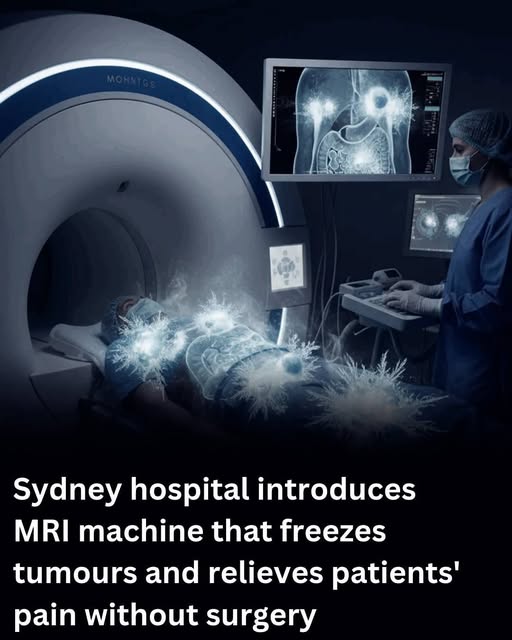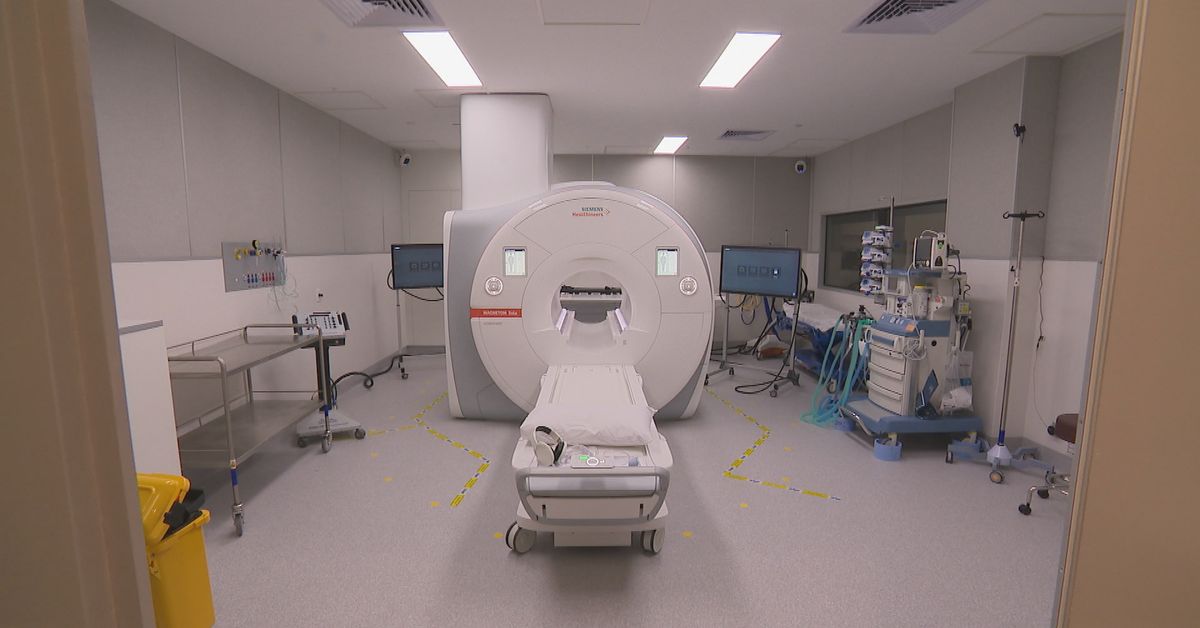Liverpool Hospital in south-west Sydney has become the first medical facility in Australia to implement an advanced MRI-guided cryoablation system—an innovative medical technology designed to freeze and destroy certain types of tumours. This development represents a major step forward in non-invasive cancer treatment and pain management, offering patients a faster recovery compared to traditional surgical options. The new system has been introduced as part of the hospital’s ongoing redevelopment project, which aims to enhance specialised care and expand cancer treatment services across New South Wales.
A Breakthrough in Minimally Invasive Tumour Treatment
Cryoablation is a medically recognised procedure that uses extreme cold to destroy abnormal tissue. It has been employed in various countries for the treatment of both benign and malignant tumours, as well as for pain management related to cancer. The procedure involves inserting a specialised needle or probe into the targeted tumour. This probe is cooled with gas, creating an “iceball” that freezes the abnormal tissue. The extreme cold leads to cell destruction, while the surrounding healthy tissue is largely preserved due to the precision of the freezing process.
Unlike conventional surgical methods, cryoablation is performed using imaging guidance—most commonly ultrasound, CT, or MRI—to ensure the highest possible accuracy. At Liverpool Hospital, the integration of MRI guidance marks a significant advancement. MRI provides real-time, high-resolution images, allowing specialists to visualise the tumour and the extent of the ice formation with exceptional detail. This level of precision helps ensure that only the tumour is affected while critical nearby structures are protected.

How MRI-Guided Cryoablation Works
The MRI-guided cryoablation system operates by combining imaging technology with a cryogenic probe. During the procedure, the patient is positioned inside the MRI scanner, where doctors can monitor the tumour in real time. The probe is carefully inserted into the tumour, and a controlled release of argon gas cools the tip of the needle to sub-zero temperatures. This process forms an iceball that engulfs the tumour, effectively destroying the targeted tissue.
Once the desired temperature and coverage are achieved, the tissue is allowed to thaw gradually. Over time, the destroyed tumour cells are naturally absorbed by the body. Most patients can return home the same day, as the procedure is minimally invasive and typically requires only a small incision. This approach reduces post-operative pain, lowers the risk of infection, and significantly shortens recovery time compared to open surgery.
Benefits for Patients and the Healthcare System
According to specialists at Liverpool Hospital, MRI-guided cryoablation offers several important benefits. The procedure can provide rapid relief for patients experiencing tumour-related pain, particularly in hard-to-treat areas such as the spine, kidneys, or liver. Because the treatment is image-guided, it allows clinicians to target tumours that may be difficult to reach surgically or that are located near vital organs or nerves.
In addition to pain relief, patients may experience improved mobility and quality of life within days of the procedure. Since the treatment is performed on an outpatient basis, it also helps reduce the need for lengthy hospital stays and extensive rehabilitation. This efficiency can translate to lower overall healthcare costs and better allocation of hospital resources.
A Patient’s Perspective
For patients like 64-year-old grandmother Josephine Cordina, the impact has been profound. Ms. Cordina underwent MRI-guided cryoablation at Liverpool Hospital to treat a nine-millimetre tumour pressing on her spine. Following the procedure, she reported significant improvement and a return to her normal daily activities shortly thereafter. Her case highlights the procedure’s potential to provide effective pain relief and restore comfort without the risks associated with major surgery.
Expert Insights from the Medical Team
Dr. Glenn Schlaphoff, who leads the interventional radiology program at Liverpool Hospital, explained that the cryoablation technique allows the tumour to “die off” naturally after being frozen, without the need for invasive surgical intervention. He emphasised that MRI guidance offers exceptional control over the process, ensuring that doctors can monitor the iceball’s spread and confirm that the tumour has been fully treated.
This precision is particularly valuable for tumours near the spine or other sensitive structures, where surgery can pose significant risks. MRI-guided cryoablation provides an alternative for patients who may not be suitable candidates for open or laparoscopic surgery due to age, health conditions, or tumour location.

Integration into Liverpool Hospital’s Redevelopment
The new MRI-guided cryoablation system is part of Liverpool Hospital’s extensive redevelopment project, which represents nearly $1 billion in investment to expand and modernise healthcare services. The redevelopment includes new operating theatres, upgraded imaging technology, and a state-of-the-art cancer centre expected to open in 2027.
These upgrades aim to establish the hospital as a leading centre for advanced cancer care and minimally invasive therapies in Australia. The addition of cryoablation aligns with the hospital’s commitment to improving patient outcomes through innovation and evidence-based medicine.
Global Context and Clinical Validation
MRI-guided cryoablation has been used internationally for several years, particularly in the United States and Europe, where it is supported by clinical studies demonstrating its effectiveness and safety. Research published in reputable medical journals such as Radiology and Journal of Vascular and Interventional Radiology has shown that cryoablation can achieve effective tumour control, reduce pain, and improve quality of life for patients with certain types of cancer or benign growths.
While the technology does not replace all forms of tumour treatment, it provides a valuable option in specific cases—especially when surgery poses too great a risk or when patients prefer less invasive alternatives. The inclusion of MRI guidance adds a layer of precision that can improve treatment accuracy and help clinicians assess treatment success during the procedure itself.
Expanding Access to Non-Invasive Oncology Treatments
The introduction of MRI-guided cryoablation at Liverpool Hospital reflects a broader trend toward minimally invasive oncology treatments. Around the world, medical institutions are increasingly investing in technologies that minimise patient discomfort, shorten recovery periods, and reduce complications. These approaches not only enhance patient experience but also free up hospital resources, allowing more people to access timely care.
As technology continues to evolve, cryoablation could become more widely available across Australia. Ongoing research and clinical data will further determine which types of tumours respond best to the procedure and how it can be integrated into broader cancer treatment plans.

A Step Toward the Future of Patient-Centred Care
The deployment of the MRI-guided cryoablation system at Liverpool Hospital underscores the growing importance of combining medical innovation with compassionate, patient-focused care. For patients who once faced complex surgeries and long recovery times, this new option provides hope for faster, safer, and more comfortable treatment.
By adopting advanced technologies backed by scientific evidence and supported by a strong clinical framework, Liverpool Hospital is setting a new standard for cancer care in Australia. This initiative represents a shift toward treatments that prioritise both medical precision and patient well-being—ensuring that innovation in healthcare continues to serve its most essential purpose: improving lives.
Sources
- NSW Health official announcements on Liverpool Hospital redevelopment
- Journal of Vascular and Interventional Radiology (Society of Interventional Radiology)
- Radiology journal, Radiological Society of North America (RSNA)
- U.S. National Library of Medicine (MedlinePlus) – Cryoablation overview
- Cancer Council Australia – Tumour treatment and pain management guidelines



